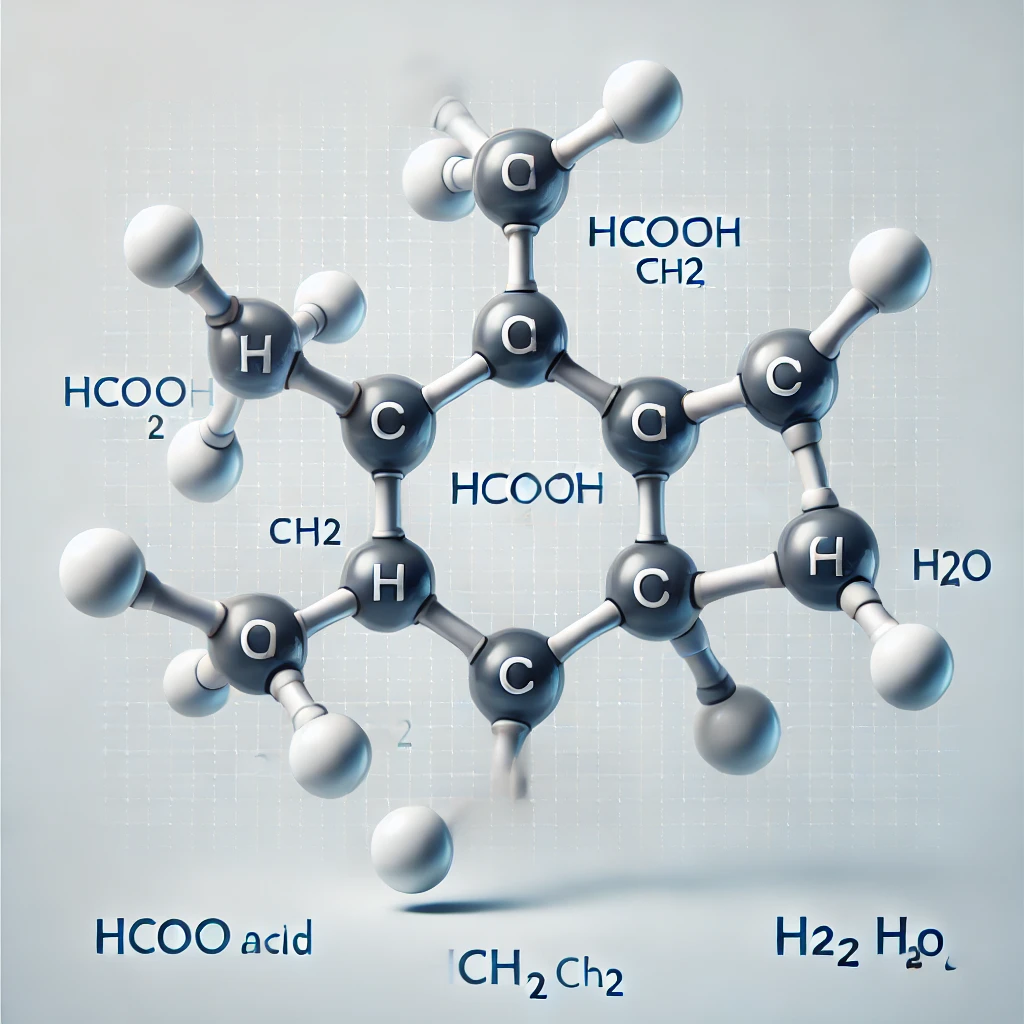If you’re exploring the chemistry world or simply trying to understand a complex compound better, you’re in the right place. In this article, we’ll dive into everything about HCOOH CH2 H2O—from its properties and uses to its significance in daily life. Let’s simplify the science and make it easy for everyone to understand.
What is HCOOH CH2 H2O?
At its core, HCOOH CH2 H2O represents a chemical combination of formic acid (HCOOH), methylene (CH2), and water (H2O). Each component carries its own significance in chemical reactions, and together they form an essential compound that finds applications in several industries.
Formic acid (HCOOH) is a naturally occurring substance often found in ant venom and plants. It is a simple organic acid with several uses. Adding methylene (CH2) and water (H2O) to this equation creates a versatile compound used in various chemical processes.
Key Properties of HCOOH CH2 H2O
Understanding the properties of HCOOH CH2 H2O is crucial to appreciating its applications:
- Chemical Structure:
The molecule is a combination of formic acid, methylene, and water. This blend enhances its stability and utility in chemical reactions. - Solubility:
Due to the presence of water (H2O), this compound is highly soluble and can easily mix with other substances. - Reactivity:
Formic acid (HCOOH) is known for its reactivity, and when paired with methylene (CH2), it becomes a vital component in producing esters, resins, and other chemicals. - Environmental Compatibility:
The compound is eco-friendly as its components are naturally occurring and biodegradable. - Common Uses of HCOOH CH2 H2O
The applications of HCOOH CH2 H2O are vast and spread across industries. Here are some of its common uses:
1. Industrial Applications
In the chemical industry, HCOOH CH2 H2O is used in the synthesis of various products such as resins, adhesives, and coatings. Its reactivity makes it a favorite in creating specialty chemicals.
2. Agriculture
Formic acid, a key component, is often used as a preservative in animal feed. The addition of water (H2O) and methylene (CH2) creates a stable solution that helps improve shelf life.
3. Pharmaceutical Industry
The pharmaceutical industry uses this compound for drug synthesis. Its natural components make it an excellent candidate for eco-friendly drug production.
4. Cleaning Products
Thanks to the presence of formic acid, HCOOH CH2 H2O is used in cleaning products. It’s effective at removing rust, limescale, and other stubborn stains.
How is HCOOH CH2 H2O Made?
The production process of HCOOH CH2 H2O involves combining formic acid (HCOOH), methylene (CH2), and water (H2O) under controlled conditions. Here’s a simplified explanation:
- Sourcing the Components:
- Formic acid is derived from natural sources or through chemical synthesis.
- Methylene is obtained as a by-product in certain industrial reactions.
- Water is, of course, readily available.
- Combining the Components:
The components are mixed in precise ratios, ensuring their properties complement each other. - Purification:
The final solution is purified to remove impurities, resulting in a clean and effective compound. - The Role of HCOOH CH2 H2O in Sustainability
One of the most significant benefits of HCOOH CH2 H2O is its contribution to sustainable practices. Let’s explore how:
- Biodegradability:
Since its components are naturally occurring, the compound breaks down easily without harming the environment. - Reduced Chemical Waste:
Its efficient reactivity minimizes waste in industrial processes, making it a preferred choice for green chemistry. - Eco-Friendly Cleaning:
Using HCOOH CH2 H2O in cleaning products reduces the reliance on harsh, synthetic chemicals. - Precautions When Handling HCOOH CH2 H2O
While HCOOH CH2 H2O is a versatile compound, it’s essential to handle it safely. Here are some tips:
- Wear Protective Gear:
Always use gloves and goggles when working with the compound to avoid skin or eye irritation. - Proper Storage:
Store the compound in a cool, dry place, away from direct sunlight and incompatible substances. - Ventilation:
Ensure good ventilation when working with HCOOH CH2 H2O to prevent inhalation of fumes. - Follow Guidelines:
Refer to the Material Safety Data Sheet (MSDS) for detailed handling instructions. - Future Potential of HCOOH CH2 H2O
As industries move towards greener practices, the demand for eco-friendly compounds like HCOOH CH2 H2O is expected to grow. Here are some areas where it could shine:
- Renewable Energy:
The compound may play a role in creating sustainable energy solutions. - Advanced Pharmaceuticals:
Researchers are exploring new ways to utilize HCOOH CH2 H2O in drug development. - Smart Agriculture:
Its use in enhancing crop yields and preserving animal feed is likely to expand. - Why Should You Care About HCOOH CH2 H2O?
Understanding compounds like HCOOH CH2 H2O helps us appreciate the chemistry behind everyday products. Whether it’s cleaning your home or contributing to sustainable industries, this compound has a role to play.
Conclusion
HCOOH CH2 H2O might sound complex, but it’s a straightforward and essential compound with numerous applications. From industrial uses to environmental benefits, its versatility is unmatched. By understanding its properties and applications, you can see how it fits into the larger picture of sustainability and innovation.
Whether you’re a student, professional, or curious reader, knowing about HCOOH CH2 H2O opens doors to appreciating the marvels of chemistry in our everyday lives.
